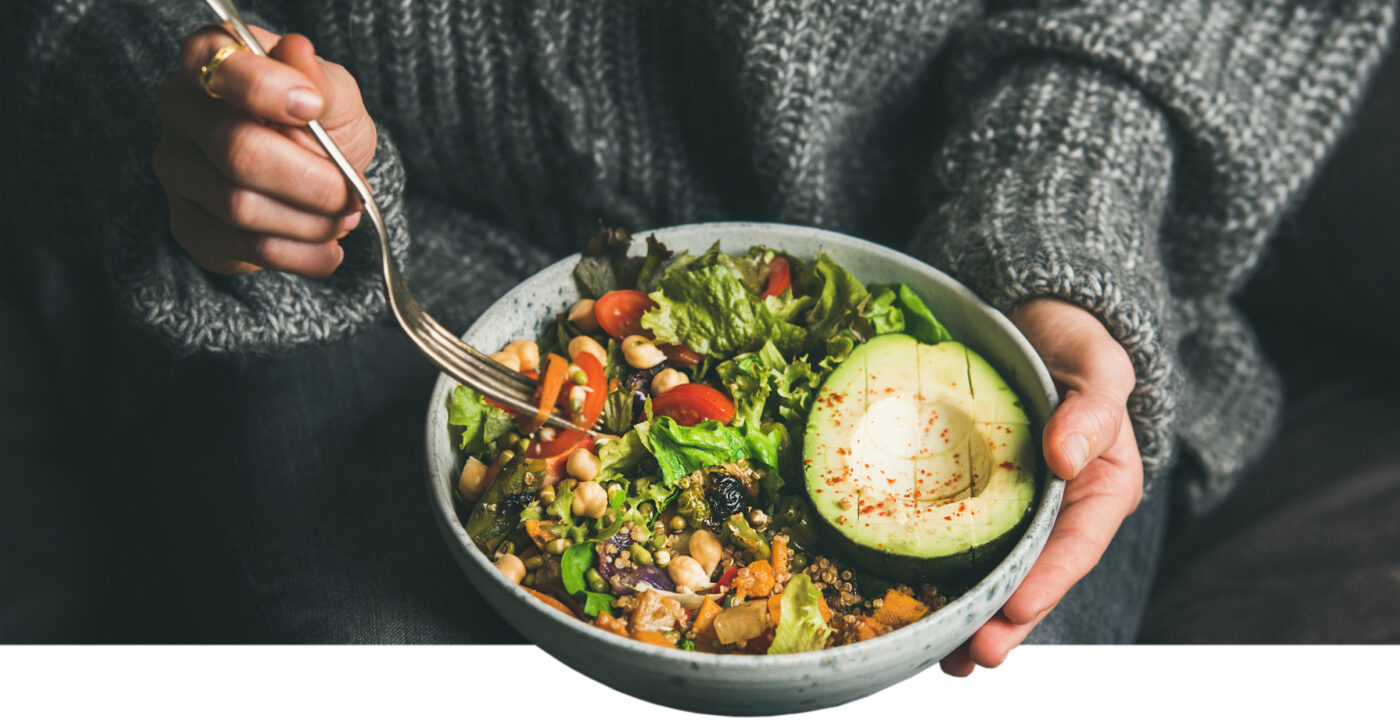Natural Instincts
You know, when we were just little babies, we knew exactly when to eat and when to stop. Our bodies were like, “Hey, I’m hungry!” or “Nope, I’m good now!” We were in sync with our needs and knew the right foods and portions for us. But as we grew up, things got a bit more complicated.
Our inner wisdom got tangled up with all these other voices telling us how we should eat. We heard it from our parents, our friends, TV commercials, health classes, and even from so-called diet experts. Don’t even get me started on movies and magazines! All these messages created a mix of desires, impulses, and dislikes, making it harder for us to just eat and enjoy the right amount of food. Isn’t it fascinating how our natural instincts can get overshadowed by all these influences?
You know, it’s so important to tune in to what our bodies are telling us about our food choices. When we listen to our cellular hunger, we can create a healthier and more balanced relationship with food. This is what mindful eating is all about – paying attention to our body’s needs and finding satisfaction in our meals.
Take, for instance, my experience with cellular hunger. After my cancer surgery, my body was telling me exactly what it needed to heal through my intense cravings for strawberries and liver pâté. And by listening to those cravings and learning about the nutrients my body needed, I was able to support my healing process and feel better.

Cravings, Cancer, and the Healing Power of Food
A few months after my cancer surgery, I found myself with an insatiable appetite for strawberries and liver pâté – something I hadn’t even thought about in decades. But my cravings were so intense, I had to get to the bottom of it. I sort of knew that after a surgery like mine, eating the liver can be incredibly beneficial, so it was not so much of a surprise to me. It’s packed with essential nutrients like iron, Vitamin A, Vitamin D, Vitamin B12, and protein (1), all of which play a crucial role in helping the body heal and recover. I was lucky enough to have my friend Tanuhsa who made me fresh batches of the most delicious liver pâté every day to support me in my recovery.
But the strawberry cravings were a mystery to me. I knew they were a good source of Vitamin C and antioxidants, but so are many other fruits and berries (2). That’s when I discovered something truly fascinating – phytoestrogens. You see, my ovaries were removed during my surgery, and my body was left with no source of estrogen. That’s when I realized that my body was searching for sources of phytoestrogens, which are plant compounds that mimic estrogen.(3,4,5) And wouldn’t you know it, strawberries are one of the richest sources of phytoestrogens. It was like my body was telling me exactly what it needed to heal and recover.

Cellular Hunger: Deciphering Our Body’s Not So Secret Language
Have you ever noticed that your body seems to be telling you something through the way you feel? For example, when you’re lacking certain nutrients, you might experience headaches, dizziness, irritability, or a sudden drop in energy. It’s like your cells are calling out for what they need!
You know, our bodies crave some key elements to keep them happy and healthy. We’re talking water, salt, protein, fat, carbs, minerals, vitamins, and even those little trace elements like iron or zinc. But let’s be honest, we’re often so busy, distracted, and caught up in the noise around us that we don’t always pay attention to what our bodies are asking for.
Every now and then, though, our bodies send us a clear message, like, “Hey, I could really use some citrus!” or “Water, please!” or “Tomato soup sounds amazing right now!” These requests usually pop up when we’re feeling under the weather, and our bodies are super focused on getting the right nutrients to help us heal. So, let’s try to listen to our bodies more often and give them what they need to stay happy and healthy!
It’s interesting to think about what happens when we fast. You’d expect the signals from our hungry cells to be overpowering, but surprisingly, symptoms like dizziness and faintness usually only last a few days. After that, many people report feeling more energized than ever before. It’s like our bodies are saying, “Thanks for giving me a break from all the junk food. I needed some rest.” By paying attention to the signals our bodies send us, we can learn to hear the call of our cells for the nutrients they need to thrive.

Fasting: Uncovering the Hidden Wisdom of Cellular Hunger
Actually, fasting can teach us a lot about cellular hunger (6). When we fast, our bodies switch to a state of ketosis, where they start to burn stored fat for energy (7). This metabolic shift can help us become more aware of our true hunger signals and differentiate them from other triggers like stress, boredom, or emotional eating (8).
By paying attention to the signals our bodies send us, we can learn to hear the call of our cells for the nutrients they need to thrive. When we look at the concept of cellular hunger, it’s important to consider how different nutrients affect our cells. For example, our cells require a balance of macronutrients – carbohydrates, proteins, and fats – as well as micronutrients like vitamins and minerals to function optimally. When our cells receive the right balance of these nutrients, they can perform their tasks more efficiently, leading to better overall health and well-being.
But how do you know what your cells need? By listening to your body and paying attention to the signals it sends you. Sometimes, these signals can be obvious, like the intense cravings I experienced after my surgery. Other times, they might be more subtle, like feeling tired or sluggish after a meal that wasn’t nutritionally balanced. To truly tap into our cellular hunger, we need to cultivate a mindful awareness of our body’s signals and learn to trust that it knows what it needs.
Developing a healthy relationship with food and our bodies is an ongoing process. As you learn to recognize and respond to your cellular hunger, you can become more attuned to your body’s needs and create a balanced, nourishing eating experience. This, in turn, can lead to improved overall health and a more enjoyable relationship with food.
Cellular hunger is a powerful concept that can help us reconnect with our body’s natural instincts and develop a healthier, more balanced relationship with food. By tuning into our body’s signals and understanding the nutrients our cells need, we can make more mindful choices that support our health and well-being. So, let’s start listening to our bodies and embracing the wisdom of cellular hunger, one meal at a time.

The Rhythms of Nature and Our Bodies
Have you ever noticed how your appetite and food preferences change with the seasons? In the summertime, you might crave light, refreshing meals like salads, fruits, and cold beverages, while in the wintertime, you might find yourself yearning for hearty, warming dishes like soups, stews, and casseroles. This is not a coincidence! Just as the seasons change, so do our bodies’ needs for different types of nourishment. By understanding the seasonal aspects of cellular hunger, we can better support our bodies throughout the year and enjoy a more harmonious relationship with food.
Seasonal Foods: Nature’s Calendar
Eating seasonally has been a part of human life for thousands of years. Before the advent of modern transportation and refrigeration, people had no choice but to eat what was available to them during each season. This way of eating not only ensured a diverse diet but also helped people stay in tune with their bodies and the rhythms of nature. Many traditional cultures still practice seasonal eating, and there’s a growing movement to bring this wisdom back into our modern lives.
One of the benefits of eating seasonally is that it aligns with our bodies’ needs for certain nutrients at different times of the year. For example, fruits and vegetables that are in season during the summer months tend to be high in water content, helping to keep us hydrated and cool. On the other hand, winter produce tends to be more calorie-dense and rich in nutrients that support our immune systems, helping us stay warm and healthy during the colder months.

Listening to Our Seasonal Cellular Hunger
Our bodies are wise, and they often send us signals about what they need based on the time of year. By paying attention to our cellular hunger and seasonal cravings, we can better support our bodies and overall health. Here are a few tips for tuning into your seasonal cellular hunger:
- Get familiar with what’s in season: Research which fruits and vegetables are in season during each time of the year in your area. This can help you make more informed choices at the grocery store or farmers’ market and guide your meal planning.
- Pay attention to your cravings: Notice if your body is craving certain types of foods at different times of the year. These cravings might be a sign that your body needs specific nutrients that are abundant in seasonal produce.
- Experiment with seasonal recipes: Try incorporating seasonal ingredients into your meals, and explore new recipes that highlight the flavors and nutrients of the season. This can help you stay excited about your food and connected to the natural rhythms of the earth.
- Be flexible: Remember that our bodies’ needs change throughout the year, and it’s essential to remain open and adaptable to those changes. By being flexible with your food choices and listening to your cellular hunger, you can create a more balanced and satisfying eating experience.
By understanding and embracing the seasonal aspects of cellular hunger, we can support our bodies and overall well-being throughout the year. Eating seasonally not only helps us stay in tune with our bodies’ needs but also connects us to the natural rhythms of the earth. So, let’s start listening to our seasonal cellular hunger and enjoy the delicious, nourishing bounty each season has to offer.

Tuning Into the Body
You know, autumn has this interesting way of making us feel hungrier than usual. When the temperature starts to drop, our bodies are like, “Hey, I need more food to stay warm and cozy!” Back in the day, listening to this seasonal hunger was super important for our survival. We needed to store some extra insulation to protect our inner organs from the cold, and we also needed more energy to keep our bodies warm – did you know that shivering actually burns calories?
Imagine being stuck in a chilly cave up north, waiting for the snow to melt so you could get out, all the while your food and fuel supplies were running low. It totally made sense to eat more during the fall when food was plentiful to prepare for the harsh winter months. But fast forward to today – we’ve got well-heated houses, cars with toasty seats, and even teenagers we can pay to clear our driveways! So, maybe stocking up on calories for the winter doesn’t seem like the smartest move, especially when we can just drive to the store to satisfy our double-fudge ice cream cravings.
You might be wondering, “How can we move beyond these ancient survival instincts?” Well, the first step is mindfulness – being aware of that little voice inside us that’s like, “Hey, feed me, I’m cold!” We might even feel the deep-rooted fear of starving or freezing to death. But we can pause, acknowledge it, and think about what could actually soothe that voice.
Picture yourself as an avid hiker who just completed a challenging trail, feeling exhausted but accomplished. In this scenario, it’s reasonable to listen to your body’s needs and indulge in a satisfying meal like a veggie-packed stir-fry with brown rice and some lean protein. However, if you’re someone who has spent a leisurely day reading a book on the couch, it might be more fitting to offer your inner voice a lighter option like a crisp salad with some nuts and avocado, or a small bowl of whole-grain cereal with fresh fruit. You could also opt for a short yoga session or a relaxing meditation to refresh your body and mind. The key is to recognize that there’s a vast array of ways to care for ourselves while staying in tune with our individual needs.

PRACTICES
You know, through mindfulness, we can become more in tune with our cellular hunger and learn to tell what our body truly needs apart from what our mind craves. The cool thing is we can actually train ourselves to listen to our body’s messages in a super simple way. Before we eat, all we need to do is take a little pause, turn our attention inward, and ask our body what it needs to do its job. By doing this regularly, we can become more aware of our body’s needs and make more mindful food choices.
🍽️ Meal Planning with Cellular Hunger in Mind
Make time each week to plan meals and snacks that address your body’s needs. Focus on incorporating a variety of nutrient-rich whole foods to ensure you’re satisfying your body’s cravings for essential nutrients. As you plan, think about the specific nutrients your body may require, and consider incorporating foods rich in those nutrients.
🛒 Grocery Store Exploration
For a delightful and engaging way to connect with your body’s needs while grocery shopping, give this activity a try. Just be sure not to do it on an empty stomach! Begin by exploring the outer sections of the store, where the freshest and most wholesome items are located. As you browse, gently ask your body, “What are you craving?” Whenever you spot something intriguing, pause for a moment and inquire, “Body, is this what you’re looking for?” Keep the question casual and observe the feedback you receive. You might be amazed by the revelations your body shares with you!
🔍 Discover Your Cellular Hunger
Find a quiet spot, close your eyes, and really tune into your body. Can you tell if your body’s cells are hungry or satisfied? If they’re hungry, what are they craving? Liquid or solid food? Vegetables? Root or leafy ones? Fruit? Citrus or something else? Salt? Starch? Protein? It might be a bit tricky at first. To make it easier, try this before eating. Sit for a few minutes with your eyes closed and listen to what your body genuinely wants.
⏸️ Check-In During Mealtime
Midway through your meal, pause, close your eyes, and check if your body is still hungry. If so, what’s it craving now? Do the same at the end of your meal. This practice helps you stay in touch with your body’s needs as you eat, ensuring you don’t overindulge or miss out on essential nutrients
💧🍽️ Thirst or Hunger?
Sometimes, what we think is hunger is actually our body being thirsty. Before reaching for a snack, try having a drink instead – juice or a warm beverage. Enjoy it slowly, paying attention to the temperature and taste. Afterward, turn your focus inward and see if your hunger has changed. Did it decrease, increase, or change what it’s asking for? This practice helps you learn the difference between hunger and thirst and ensures you’re giving your body exactly what it needs.
🤔 Body, What’s Your Craving?
Whether you’re feeling a bit off or simply aiming to maintain your well-being, this exercise is perfect for connecting with your body’s desires. Just visualize browsing through your fridge or pantry and gently ask, “Body, what do you need right now?” It’s a fantastic way to tap into your body’s wisdom and understand its needs, whether you’re under the weather or in tip-top shape. Give it a try and see what insights your body has to share!
🍲🏃♂️ Post-Exercise Cellular Hunger Check
After a workout, take a moment to check in with your body and identify its needs. Physical activity can influence your cellular hunger, so it’s essential to refuel with the appropriate nutrients to support recovery and muscle growth. Consider incorporating a post-workout snack or meal that provides the necessary protein, carbohydrates, and healthy fats.
💆♂️🔍 Progressive Relaxation for Cellular Hunger Awareness
Practice progressive relaxation, a technique where you tense and relax different muscle groups in your body, to become more in tune with your body’s sensations. As you relax each muscle group, pay attention to any signs of cellular hunger, such as a craving for specific nutrients or sensations of thirst. This practice can help you develop a deeper connection with your body and its needs.
Be Alive 🌱
Love ❤️, Julia
Mindful Eating 🥢
Mindful Eating Meditation
GUIDED MEDITATIONS 💗
DISCLAIMER: The materials and the information contained on the Positive Pranic website are provided for general and educational purposes only and do not constitute any legal, medical, or other professional advice on any subject matter. None of the information on our videos is a substitute for a diagnosis and treatment by your health professional. Always seek the advice of your physician or other qualified health providers prior to starting any new diet or treatment and with any questions you may have regarding a medical condition. If you have or suspect that you have a medical problem, promptly contact your health care provider.


























